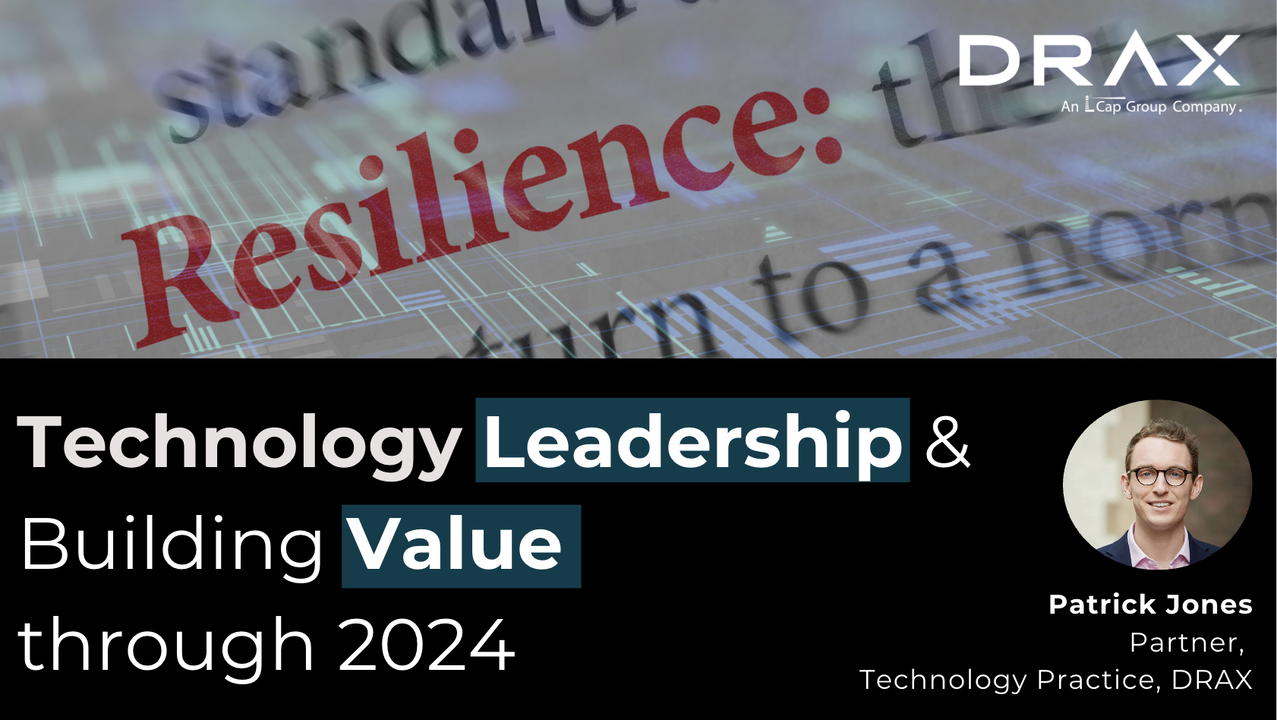Contact Us
If you’re seeking ways to invest in leadership teams or require the expertise, guidance and support of a strategic-led implementation partner, then contact us today and a member of our team will be in touch soon.

February 20th, 2024
 PART 2
PART 2
My last article looked at the lessons learned from the turbulent first few years of the 2020s, but now to look ahead. What trends will dominate this year? Here are my thoughts and predictions for 2024, again with insights from Sam Kingston, CEO of Mobica, an IoT software engineering software provider, previously backed by Inflexion and sold to Cognizant last year.
The 2020s have been defined by uncertainty and, with 2024 now underway, this looks set to continue, with elections looming in the US & UK. But having learned valuable lessons from the last few years, tech businesses are more resilient than ever, having built more solid foundations to withstand headwinds, and leadership teams with the balance of competencies to navigate a new economic landscape.
With that in mind, which key trends and opportunities will define the tech sector in the year ahead?
Generative AI: High volume vs. deep specialism technology services
Generative AI is the biggest trend of the moment, placed at the Peak of Inflated Expectations by Gartner’s 2023 Hype Cycle. In the last year, IT services businesses have begun to evolve their propositions in response to the rapid development of AI as a way of automating business processes and augmenting human capabilities. But the real impact should start to come into focus in 2024.
“Generative AI unfolds immense opportunity for technology and innovation-driven CEOs; no surprise to see enormous hype around this technology in 2023 and beyond,” comments Kingston. “However, today only a few of the tech giants and a handful of specialist organisations are seen by the market as meaningful players because the majority of client businesses are still in the initial stage of defining where and how to use AI. They are far from developing AI strategies. AI adoption will come with complexity that will require an entire ecosystem with clusters providing industry-based use cases, designing models, developing solutions, embedding those into client front, middle, and back-office environments.”
Demand for data science capability will certainly continue to increase although how this manifests itself within the structure of a senior leadership team may vary. It may also be deployed differently across different organisations, whether around revenue operations, for sales enablement, or by solution architects and data scientists for building solutions. One prediction is that technology service providers will pivot to specialise in either high volume requirements - for example, where a client needs 25 developers on board immediately - or to high margin, deeply complex, or niche projects, both of which are unlikely to be automated in the short-term. The criticality of having the right technology vendor relationships is pivotal, alongside a clear definition of the target client base (whether by seat size and/or vertical for example).
“Overarching considerations such as security, human-machine interface etc. are still there to solve,” continues Kingston. “An AI ecosystem will also demand new cooperation models that allow components held in a jigsaw puzzle to turn into a seamless solution. Not to forget the legal and compliance constraints for AI and data management. The next two years are a time of forming and shaping this evolving landscape. It will be a challenging test for those companies identifying themselves as agile, digital, and innovative to really prove such statements through a vision of their place and role along the GenAI, multi-component journey.”
Continued demand for SaaS
SaaS businesses boomed during Covid, as people looked for ways to work seamlessly across a remote and distributed workforce and connect with their loved ones while stuck at home. As the world went back to normal, the SaaS bubble deflated but as a delivery model it is still alive and well, and the right kind of SaaS business, that can demonstrate strong metrics and resilience, remains attractive to investors. Reduced risk appetite means the prior focus on top-line growth has shifted to bottom-line performance, along with the strong fundamentals discussed earlier, such as strong adoption, customer lifetime value, and NPS.
“In 2024 the software and services sectors have challenges to address,” says Kingston. “Technology CEOs should continually reassess their clients' primary immediate and future needs and key triggers for extending existing relationships. This includes careful consideration of prioritising the factors that drive purchase decisions. We should ask ourselves if client loyalty is as strong today as previously. Is the scope of work still pivotal for the client’s success? Staying relevant to their dynamic business priorities is core but being alert to the market dynamic is also imperative for a sustainable business.”
Multi-geography private equity investing
I’ve talked in a previous blog about the sustained popularity of vertical application software businesses, and, in a similar vein, we are now seeing private equity investors target businesses that have proven themselves across different geographical markets. We predict that this trend will become more entrenched in 2024. Not only does successful international expansion point to a strong business value proposition and well-defined go-to-market strategy but in an increasingly international private equity sector, investors are keen to get a foothold in new markets to drive expansion and diversify their portfolios. An injection of funds into businesses with an international footprint is also likely to mean even greater demand for top-tier cybersecurity solutions (CISO) and data protection (DPO) hires, to minimise the risk of transferring data internationally, and aid compliance with varying data and security regulations.
Tech remains the primary growth sector, with established business models evolving and new ones emerging, in a bid to solve big problems. But as the economy continues to stall and uncertainty reigns, leadership is the key differentiator to ensure effective decision-making and risk management, while keeping employees motivated to innovate and drive growth continually. Great leadership should be dynamic, and investors must ensure that as the situational narrative evolves so does the composition and balance of the leadership team, to provide maximum resilience and continued alignment to the central goal - value creation.
If you’re seeking ways to invest in leadership teams or require the expertise, guidance and support of a strategic-led implementation partner, then contact us today and a member of our team will be in touch soon.
Apply now and a member of our team will be in touch shortly.